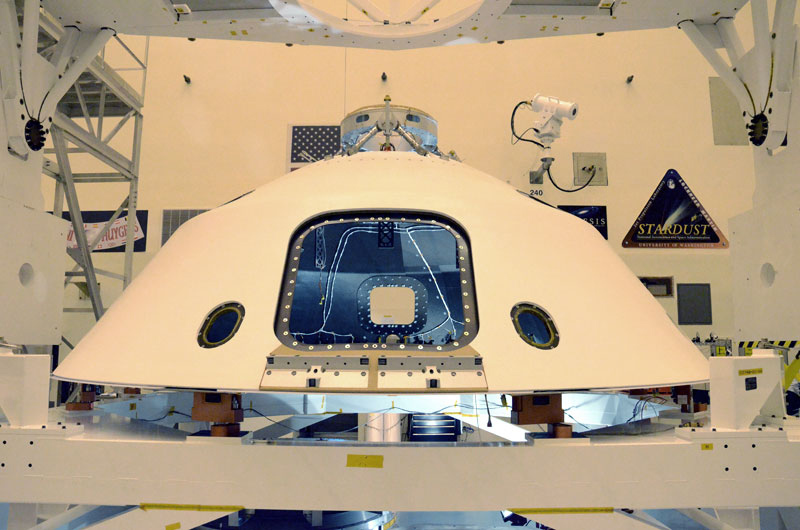Photo Gallery: Last Look at Mars Rover Curiosity Before Launch
Curiosity's Descent Stage
Curiosity will next be integrated with its descent stage, seen here, which will take it to the Martian surface. The rover will use a bold, new landing system. Like Viking, Pathfinder and the Mars Exploration Rovers that came before it, Mars Science Laboratory will be slowed by a large parachute. As the spacecraft loses speed, rockets will fire, controlling the spacecraft's descent until the rover separates from its final delivery system, the sky crane. Like a large crane on Earth, the sky crane touchdown system will lower the rover to a "soft landing" — wheels down-on the surface of Mars, ready to begin its mission.
Curiosity's Aeroshell
Once mated to its descent stage, the Mars Science Laboratory will be placed inside its aeroshell that will protect Curiosity during its deep space cruise to Mars. The hatchway opening in the aeroshell will allow engineers access a few days before launch to install the rover's power source, a radioisotope power system that generates electricity from the heat of plutonium's radioactive decay. This power source gives the mission an operating lifespan on Mars' surface of at least a full Martian year (687 Earth days, or 1.9 Earth years).
Breaking space news, the latest updates on rocket launches, skywatching events and more!

Robert Pearlman is a space historian, journalist and the founder and editor of collectSPACE.com, a daily news publication and community devoted to space history with a particular focus on how and where space exploration intersects with pop culture. Pearlman is also a contributing writer for Space.com and co-author of "Space Stations: The Art, Science, and Reality of Working in Space” published by Smithsonian Books in 2018.
In 2009, he was inducted into the U.S. Space Camp Hall of Fame in Huntsville, Alabama. In 2021, he was honored by the American Astronautical Society with the Ordway Award for Sustained Excellence in Spaceflight History. In 2023, the National Space Club Florida Committee recognized Pearlman with the Kolcum News and Communications Award for excellence in telling the space story along the Space Coast and throughout the world.


